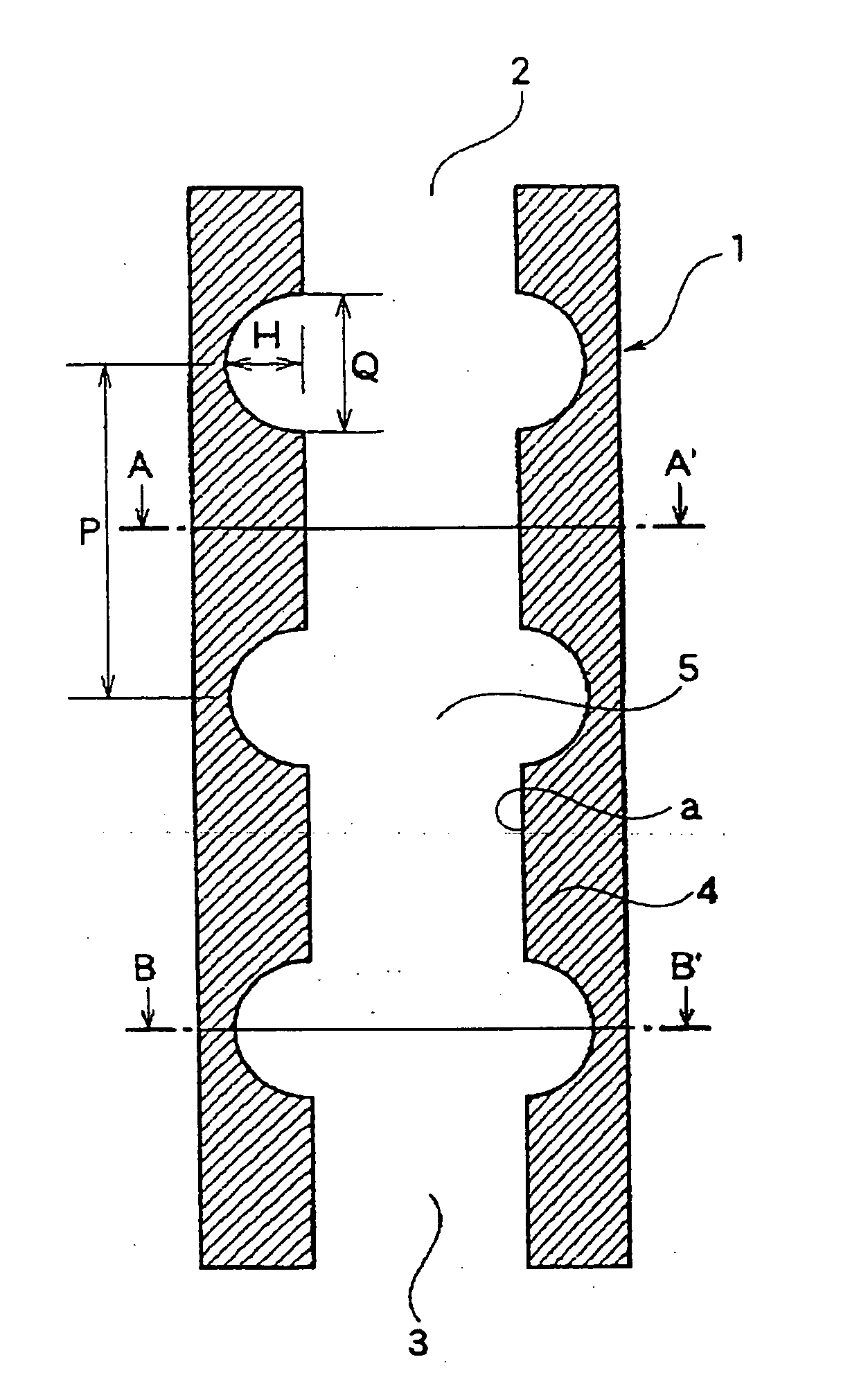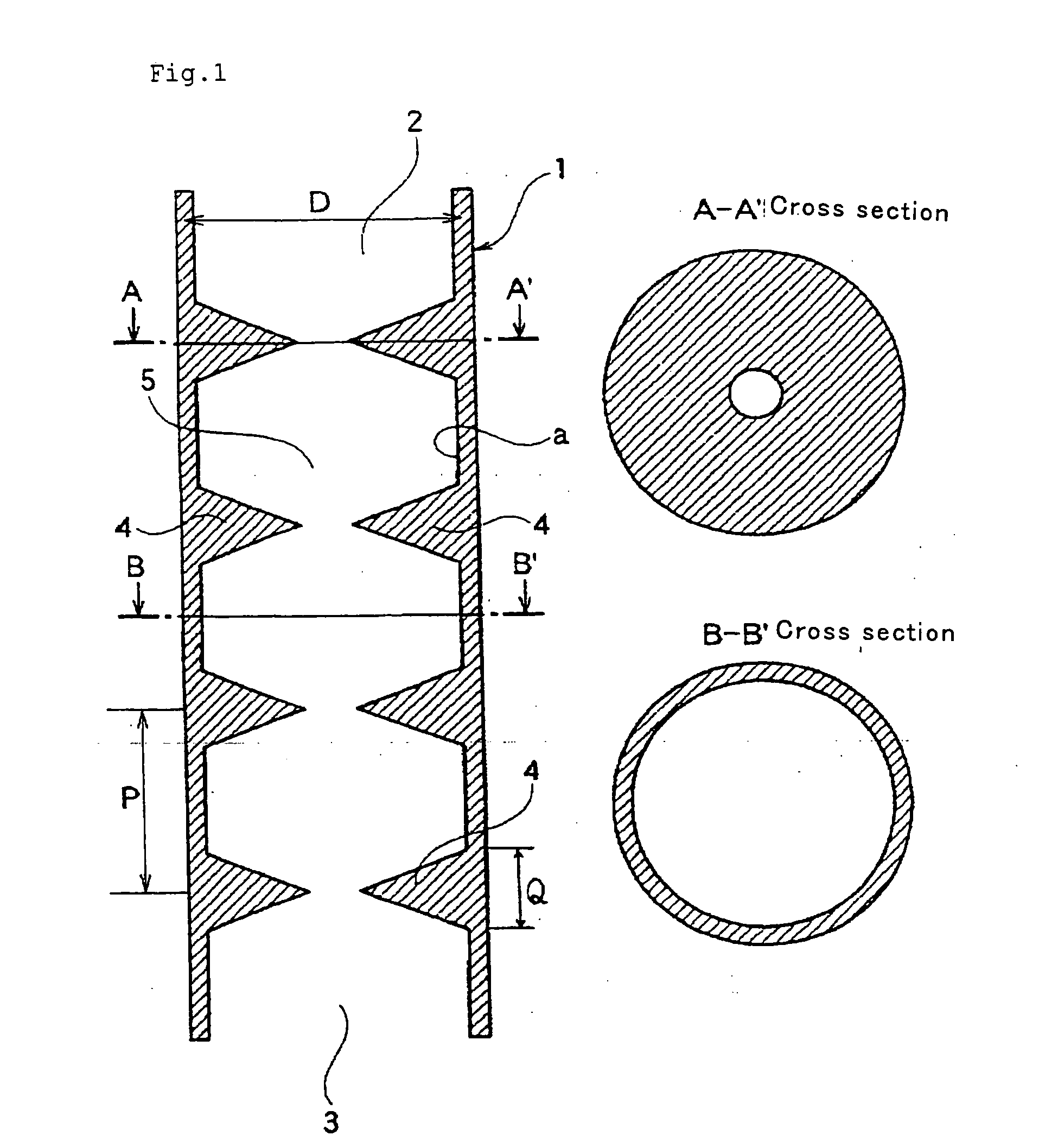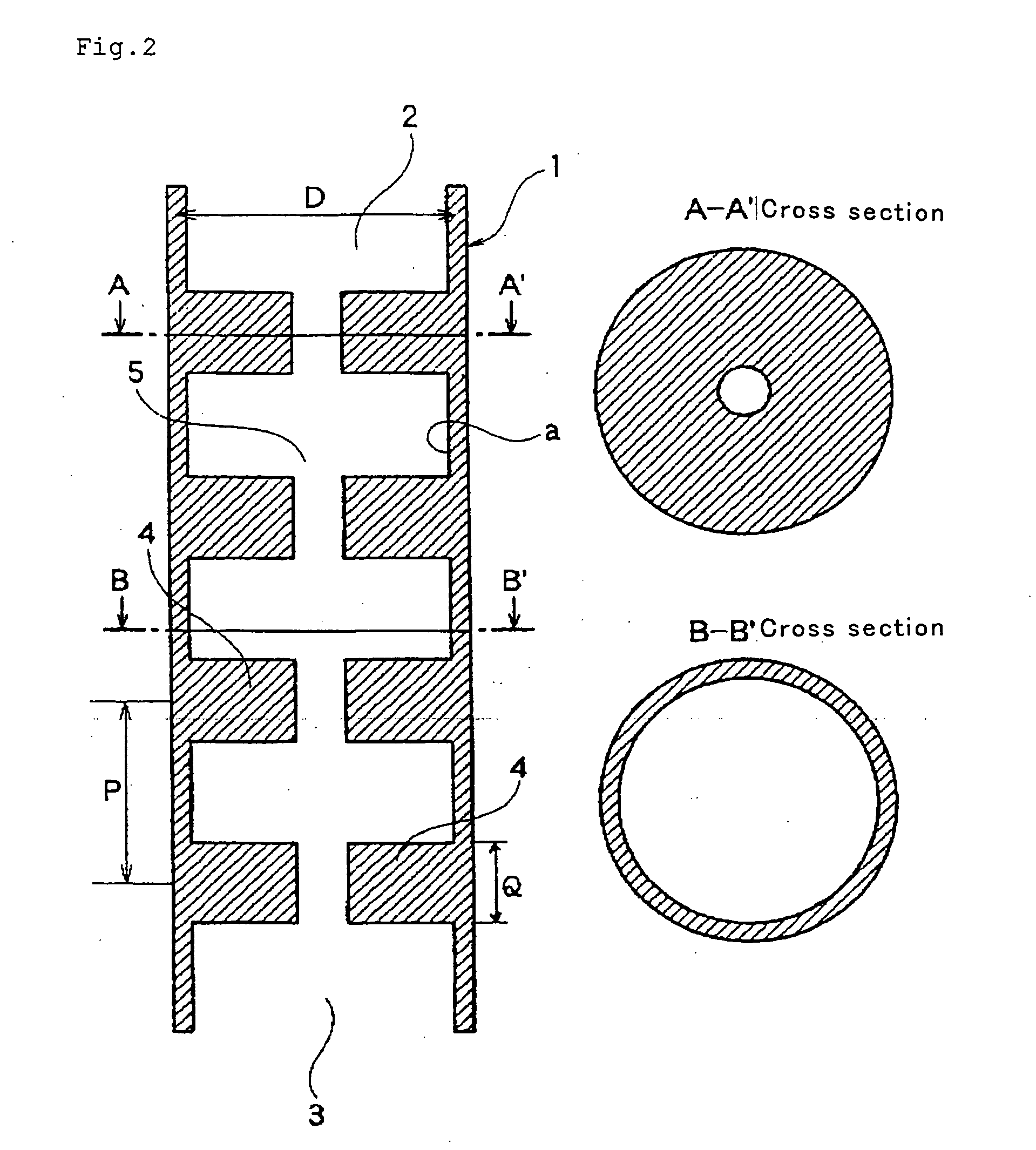Tubular reaction vessel and process for producing silicon therewith
a reaction vessel and tube technology, applied in the direction of crystal growth process, silicon compound, transportation and packaging, etc., can solve the problems of reducing the yield of silicon, the process is complicated, and the heat cannot penetrate the filler layer deep, so as to reduce the upward flow and improve efficiency. , the effect of uniform heating
- Summary
- Abstract
- Description
- Claims
- Application Information
AI Technical Summary
Benefits of technology
Problems solved by technology
Method used
Image
Examples
example 1
[0124] The following description will be presented with reference to a schematic view of FIG. 22.
[0125] A tubular reaction vessel 41 made of general-purpose isotropic graphite was provided, which was cylindrical and straight in a longitudinal direction and had an inner diameter of 150 mm, a reaction section length I of 600 mm and a thickness of 15 mm. Heating means 43 was a high frequency heating system. The high frequency heating coil as the heating means 43 for the reaction section I extended along the reaction section I of the tubular reaction vessel 41 to a length of 100 mm from each of the upper and lower ends of the reaction section I. The frequency of the high frequency heating means was 8 kHz. A 50 mm thick carbon fiber heat insulator was arranged between the reaction vessel 41 and the heating means 43, extending from 30 mm above the lower end of the reaction vessel 41 to the upper end of the heating means 43.
[0126] Flow resistance-increasing regions provided inside the tu...
example 2
[0130] The following description will be presented with reference to a schematic view of FIG. 23.
[0131] A tubular reaction vessel 51 was a vessel with a ring-shaped cross section that consisted of an outer tube 51(a) and an inner tube 51(a′) having a smaller inner diameter. The outer tube 51(a) was an isotropic graphite cylinder 250 mm in inner diameter and 5 mm in thickness. The inner tube 51(a′) was a general-purpose isotropic graphite cylinder having an inner diameter of 200 mm and a thickness of 15 mm. The reaction vessel had a straight reaction section having a length I of 1 m, and an opening 52 at a lower end.
[0132] A space 54 was created between the outer tube 51(a) and the inner tube 51(a′). A heating coil capable of generating a high frequency wave of 1 kHz was arranged as heating means 53 to heat part of the space-facing surfaces with which the feedstock gas could contact, to at least the melting point of silicon. The heating coil was arranged so as to enclose the outer ...
example 3
[0139] The following description will be presented with reference to a schematic view of FIG. 24.
[0140] A tubular reaction vessel 41 made of general-purpose isotropic graphite was provided, which was cylindrical and had an inner diameter of 210 mm, a thickness of 25 mm and a length of 4000 mm. The reaction vessel 41 included two parts: a principal reaction section IA ranging from the lower end of the reaction vessel to a height of 2800 mm, and an auxiliary reaction section IB having a length of 560 mm above the principal reaction section IA Heating means used herein were, high frequency heating systems. A high frequency heating coil 43A as the heating means for the principal reaction section IA extended from the upper end of the principal reaction section IA to 50 mm below the lower end of the reaction vessel 41. A high frequency heating coil 43B as the heating means for the auxiliary reaction section IB extended to the same height and in the same length as the auxiliary reaction s...
PUM
| Property | Measurement | Unit |
|---|---|---|
| Reynolds number | aaaaa | aaaaa |
| temperature | aaaaa | aaaaa |
| thickness | aaaaa | aaaaa |
Abstract
Description
Claims
Application Information
 Login to View More
Login to View More - R&D
- Intellectual Property
- Life Sciences
- Materials
- Tech Scout
- Unparalleled Data Quality
- Higher Quality Content
- 60% Fewer Hallucinations
Browse by: Latest US Patents, China's latest patents, Technical Efficacy Thesaurus, Application Domain, Technology Topic, Popular Technical Reports.
© 2025 PatSnap. All rights reserved.Legal|Privacy policy|Modern Slavery Act Transparency Statement|Sitemap|About US| Contact US: help@patsnap.com



